I have been interested in spinning for a while. I started using a drop spindle early last year and got pretty good at it, but it is soooooooo slow. Good for demonstrations but not so much for creating a quantity of yarn. Here at San Juan Island Historical Park we have a spinning wheel from 1860 in the Visitor’s Center. I decided that learning to spin would be a good project for the summer.
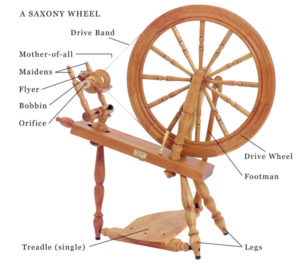
I asked around and found a woman who offered to teach me (Thanks Jeanne!). She stopped by the Visitors Center several times to give me lessons and then left me to practice during the week. The first week was all about getting the antique spinning wheel working. Tom helped with getting it balanced and repairing a couple of parts that weren’t working. Then I started learning to spin.
The first lesson was learning to use the treadle and getting the feel for how the yarn pulled onto the bobbin. I spent several hours treadling while watching the footman so I could learn to keep a slow but steady rhythm. Then I started feeding in some scrap yarn. Fortunately the Visitors Center was slow during this stage so I didn’t look ridiculous staring at the footman.
A week later, Jeanne came back and gave me my second lesson: starting to spin. She gave me a carded fleece that someone had given her and let me “have at it.” I pulled off a piece of roving, separated it until it was the proper thickness, and then tried to spin it. This was the most frustrating step because I couldn’t watch my hands and the wheel at the same time. I spent a lot of time yelling “no, no, no” as the wheel started to spin backward. Eventually I got my hands and wheel coordinated enough that I had a full bobbin of yarn. It looked a mess but I felt like I was making progress.
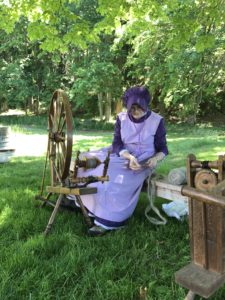
My third lesson in learning to spin came a week later. I was frustrated at how slowly I was going with preparing all the roving before I started to spin. Turns you aren’t supposed to prepare all of it before you start. You use both hands to stretch the fibers while you spin so that they twist in an even thickness and speed. When an experienced spinner does it, it looks effortless. After hours of practice I started to get the hang of that and could spin a bobbin of yarn in a couple of hours.
But what to do with that yarn? My fourth lesson with Jeanne gave me the next steps. I gently washed the skeins of yarn and let them dry overnight. Then Jeanne showed me how to ply the yarn by running the spinning wheel backward. I spin clockwise, but I ply counterclockwise. This allows the twisted yarns to twist backwards around each other, strengthening the yarn and setting the twist. Getting the rhythm of the backward wheel took some practice, but I plied all my yarn that afternoon.
I am now in the midst of the fifth lesson: learning to spin different kinds of wool. After spinning all the roving that Jeanne gave me, I bought some more at Island Fibers. I think the roving that Jeanne gave me was Shetland. The second yarn I started spinning is Blue-faced Leicester. The fiber is much longer and the roving is as soft as a cloud. I wanted to spin a yarn that reflected that, so I started by not putting in much twist. Unfortunately this resulted in yarn that kept pulling apart. I finally settled for more twist and a thicker yarn. I will be on this fifth lesson for a very long time.
Jeanne thinks I need a spinning wheel of my own, but I’m not so sure. I’m glad I can spin and give demonstrations on living history days, but I really like picking out yarn at the yarn shop. Tom pointed out that I am spinning so much yarn that I will have to spend more time knitting. Isn’t that a shame?

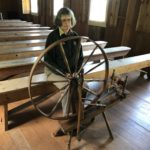
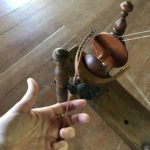
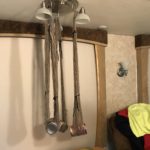
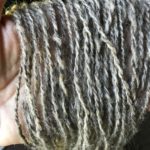
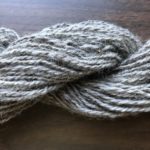
3 comments